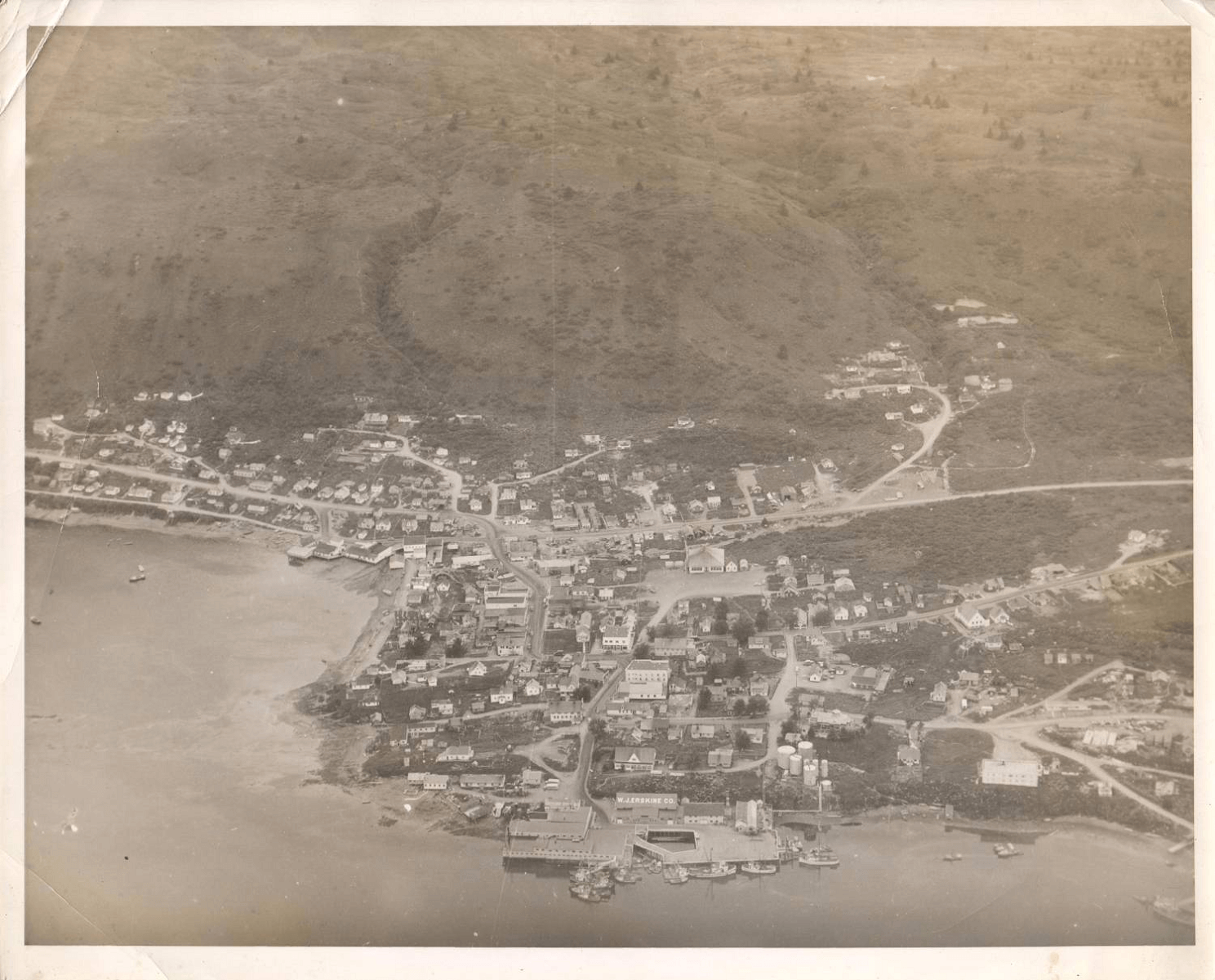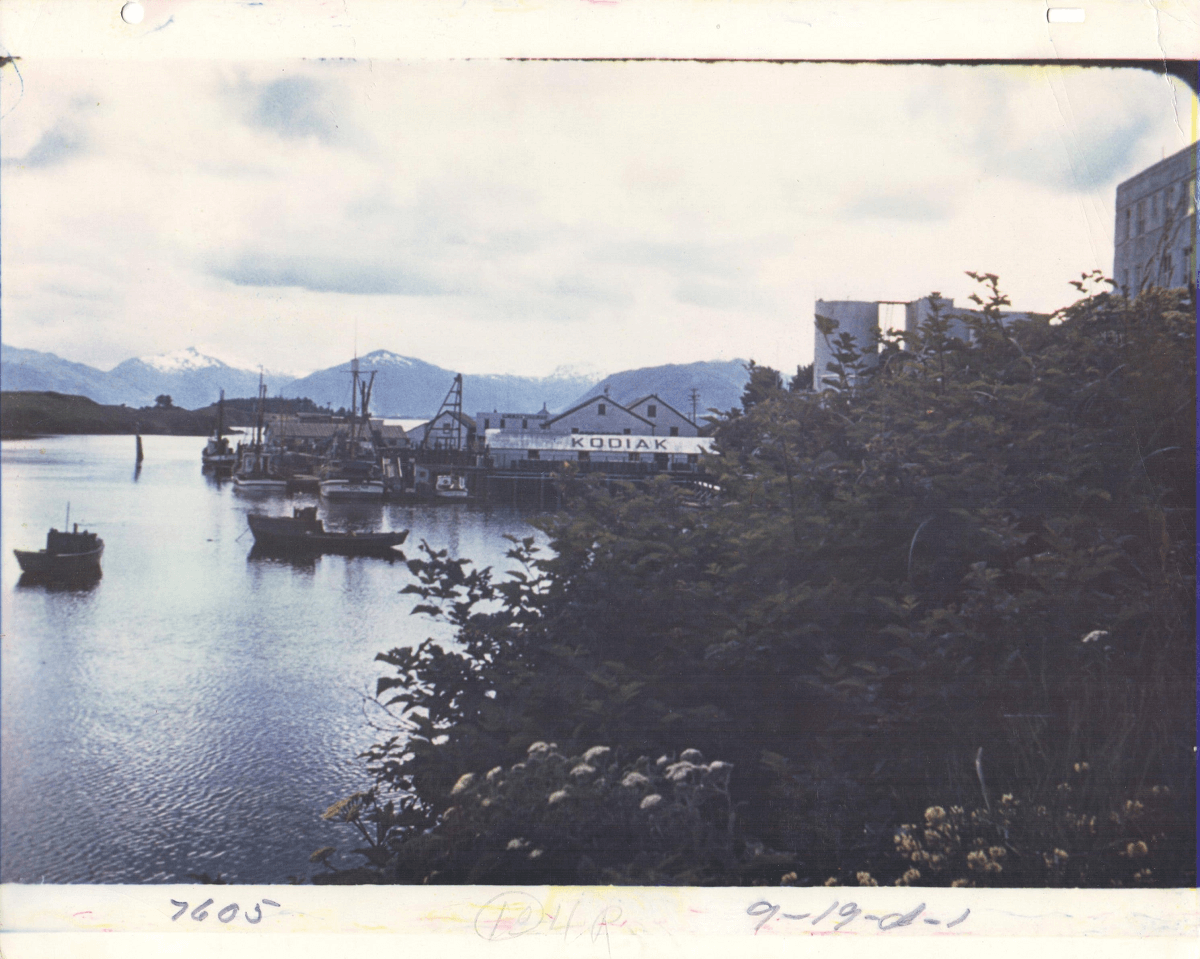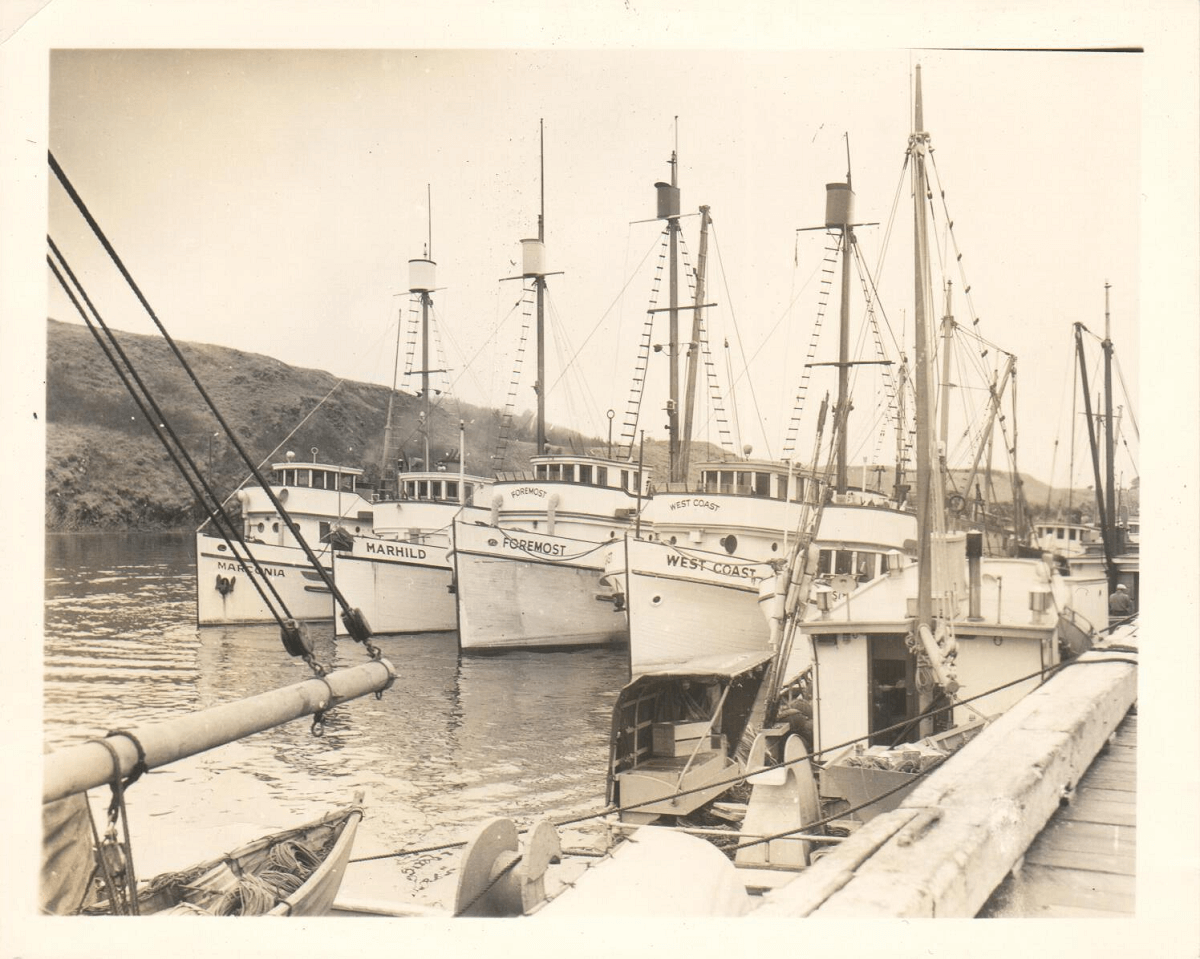Chapter 1: the Community
Listen to: Lifelong Kodiak resident Judge Roy Madsen, an Alaska Native Elder of Russian and Scandinavian heritage, as he describes his hometown and Long-time resident Chuck Mackey as he recalls Kodiak prior to the 1964 earthquake

Kodiak is a hard-working fishing town in the Gulf of Alaska on the northeastern edge of Kodiak Island. From this remote region of Alaska, the local workforce harvests and processes millions of pounds of fish every year, making Kodiak for many decades now one of the top-three fishing ports in the nation.
The W.J. Erskine docks, warehouses and stores and the Alaska Packer’s Association Cannery (aka McConaghy Cannery) extend into the Near Island Channel in this aerial view of Kodiak prior to the 1964 earthquake. The tsunami that ravaged the waterfront following the earthquake wiped out the entire Erskine and commercial holdings and the APA cannery.
Leif J. Norman photo courtesy of Nancy Norman Sweeney

Kodiak, like most major fishing ports, is a culturally rich community. The Alutiiq people discovered and inhabited the island more than 7,500 years ago. They were subjugated by the Russians, who then sold the land to the Americans. Today, Kodiak’s natural resources continue to draw people from the “Lower 48” and from around the world. Some venture to the island for world-class sport fishing and hunting, others to explore its deep bays and passes, hike rugged mountains, and photograph the magnificent Kodiak brown bear. Still, it is Kodiak’s wealth of marine resources that is the mainstay of the economy and sustains the community.
Warehouses, docks, boats, and a cannery stand on piling in the Near Island Channel
prior to the 1964 earthquake.
The fuel storage tanks and Griffin Memorial building in the foreground escaped the
tsunami, out of reach of the sea waves that destroyed the low-lying waterfront.
Leif J. Norman photo courtesy of Nancy Norman Sweeney
“There was no wealth in the community. We were entirely dependent on salmon fishing at the time." ~ Judge Roy Madsen

Many residents work on the more than 700 fishing vessels that deliver their catches to Kodiak, or in fish processing plants that line the waterfront. Others work at marine research centers and public agencies that protect and oversee Alaska’s ocean resources. Still others work at the U.S. Coast Guard base in Kodiak, the largest Coast Guard facility in the country. The Coast Guard keeps watch over fishing vessels and cargo carriers in the North Pacific 365 days a year.
The fishing vessels Marconia, Marhild, Foremost, and West Coast tie up together in the Near Island Channel prior to the 1964 earthquake and tsunami that destroyed most of the fishing vessels in port the evening of March 27th.
